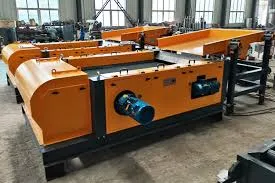

พ.ย. . 17, 2024 02:44 Back to list
The Future of Steel Scrap Recycling Plants
Steel scrap recycling plants play a critical role in today's economy by promoting sustainability and reducing the environmental impact of steel production. With the global push towards more eco-friendly practices, these facilities are becoming increasingly important in processing scrap metal, conserving natural resources, and minimizing waste. This article will explore the significance of steel scrap recycling plants, how they operate, and their impact on the environment and economy.
The Importance of Steel Scrap Recycling
Steel is one of the most recycled materials in the world, due to its durability and the possibility of being recycled indefinitely without losing its quality. The recycling of steel scrap reduces the demand for raw materials, conserves energy, and lowers greenhouse gas emissions. According to the World Steel Association, recycling steel avoids the emission of millions of tons of carbon dioxide annually. This not only contributes to global efforts against climate change but also fosters a circular economy where materials are continuously reused.
How Steel Scrap Recycling Plants Operate
Steel scrap recycling plants perform a series of processes to transform scrap metal into reusable materials. The first stage is the collection of scrap, which can come from various sources, including demolished buildings, discarded vehicles, and manufacturing byproducts. Once collected, the scrap is sorted and processed.
The sorting process is crucial, as different types of metals require different recycling methods. Modern facilities employ advanced technologies such as magnets, eddy current separators, and manual sorting to ensure a clean separation of ferrous and non-ferrous metals.
Once sorted, the scrap metal is shredded into smaller pieces, making it easier to melt down. The shredded metal is then placed into a furnace, where it is melted at high temperatures. The molten metal is subsequently purified to remove impurities before being cast into new shapes, such as sheets, bars, or rods. Finally, the recycled steel is shipped to manufacturers who use it to produce new products.
Environmental and Economic Impact

The benefits of steel scrap recycling plants extend far beyond waste reduction. Environmentally, these plants significantly lower energy consumption compared to producing new steel from raw iron ore. It is reported that recycling steel saves approximately 74% of the energy required for primary steel production. This reduction in energy consumption translates into decreased costs for steel manufacturers and ultimately lowers prices for consumers.
From an economic standpoint, steel recycling plants create numerous jobs in collection, sorting, and processing scrap metal. According to studies, the recycling industry contributes significantly to local and national economies, offering employment opportunities and generating revenue through the sale of recycled materials.
Moreover, as the demand for steel continues to rise globally, the need for efficient recycling processes will only increase. Steel scrap recycling plants are essential for meeting this demand sustainably. They help ensure that steel remains a viable material by continuously providing manufacturers with high-quality recycled content.
Challenges and Future Directions
Despite their benefits, steel scrap recycling plants face several challenges. Fluctuating steel prices can impact the profitability of recycling operations, leading to instability in the industry. Additionally, the increasing complexity of products and materials makes recycling more challenging, as manufacturers often use mixed metals that require advanced sorting technologies.
To address these challenges, investments in innovative technologies and practices are crucial. The integration of artificial intelligence and automation into recycling processes may enhance efficiency and accuracy, leading to better separation and processing of materials.
Furthermore, raising public awareness about the importance of recycling and encouraging proper disposal of scrap metal can significantly improve the collection rates and quality of materials processed by recycling plants.
Conclusion
Steel scrap recycling plants are vital to the sustainable future of the steel industry. They play a key role in reducing environmental impact, conserving resources, and promoting economic growth. As we move towards a more sustainable future, investing in these facilities and the technology that drives them will be essential in ensuring that steel remains a cornerstone of modern manufacturing while minimizing ecological footprints. Embracing the principles of recycling and sustainability can lead us towards a more circular economy, benefiting both our planet and our society.
Latest news
Troubleshooting Common Eddy Separator Problems
NewsJul.04,2025
The Role of Metal Recycling Plants in Circular Economy
NewsJul.04,2025
The Impact of Recycling Line Pickers on Waste Management Costs
NewsJul.04,2025
Safety Features Every Metal Shredder Should Have
NewsJul.04,2025
How Industrial Shredders Improve Waste Management Systems
NewsJul.04,2025
How Cable Granulators Contribute to Sustainable Recycling
NewsJul.04,2025